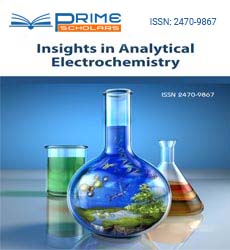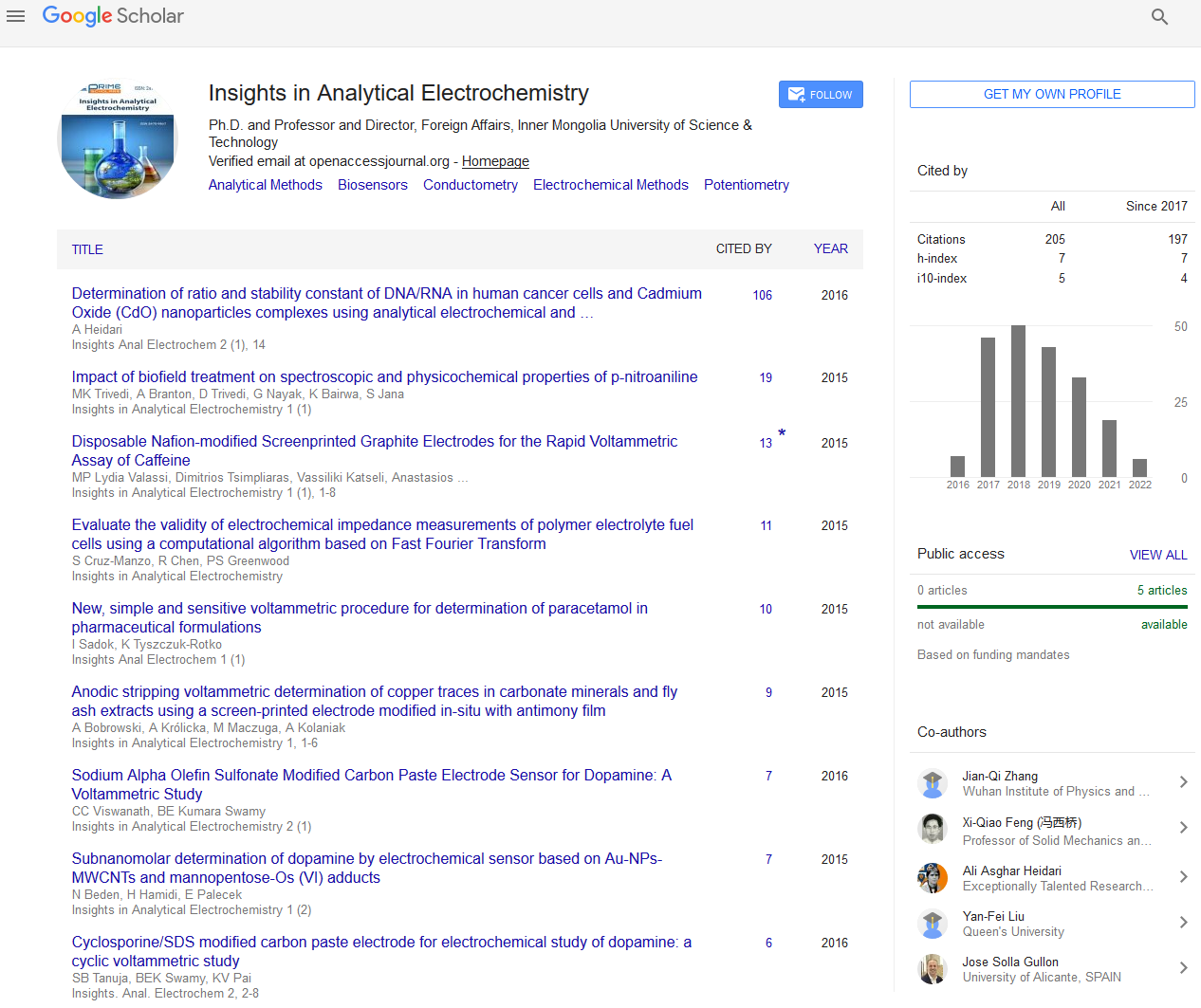Commentary - (2022) Volume 8, Issue 2
Current Coulometry Strategy for Assessment an Obscure Grouping of
an Analyte
Benoit Coasne*
Department of Chemistry, University of Edinburgh, UK
*Correspondence:
Benoit Coasne, Department of Chemistry, University of Edinburgh,
UK,
Email:
Received: 02-Mar-2022, Manuscript No. ipaei-22-13121;
Editor assigned: 04-Mar-2022, Pre QC No. ipaei-22-13121 (PQ);
Reviewed: 18-Mar-2022, QC No. ipaei-22-13121;
Revised: 23-Mar-2022, Manuscript No. ipaei-22-13121 (R);
Published:
30-Mar-2022, DOI: 10.21767/2470-9867-8.2.8
Description
Coulometry is a logical strategy for estimating an obscure
grouping of an analyte in arrangement by totally changing
over the analyte starting with one oxidation state then onto
the next. Coulometry is a flat out estimation like gravimetry
or titration and requires no compound guidelines or adjustment.
It is subsequently significant for making outright
fixation conclusions of standards. Coulometry depends on a
comprehensive electrolysis of the analyte. By comprehensive
we imply that the analyte is totally oxidized or decreased at
the functioning cathode or that it responds totally with a reagent
produced at the functioning anode. There are two types
of coulometry: controlled-potential coulometry, in which we
apply a steady potential to the electrochemical cell, and controlled-
current coulometry, in which we pass a consistent current
through the electrochemical cell. There are two essential
classes of coulometric procedures. Potentiostatic coulometry
includes holding the electric likely consistent during the response
utilizing a potentiostat. The other, called coulometric
titration or amperostatic coulometry, keeps the current (estimated
in amperes) steady utilizing an amperostat. Coumetry
utilizes a steady current source to convey a deliberate measure
of charge. One mole of electrons is equivalent to 96,485 coulombs
of charge, and is known as a faraday. Because of focus
polarization it is undeniably challenging to oxidize or decrease
a substance animal groups at a terminal totally. Coulometry is
accordingly normally finished with a middle reagent that quantitatively
responds with the analyte. The moderate reagent is
electrochemically created from an abundance of an antecedent
with the goal that focus polarization doesn’t happen. A
model is the electrochemical oxidation of I-(the antecedent) to
I2 (the middle reagent). I2 can then be utilized to synthetically
oxidize natural species, for example, ascorbic corrosive. Coulometry
is recognized from voltammetric and amperometric strategies by not depending on mass vehicle current control to
acquire a sign reliance on focus. Coulometry is a flat out technique,
and that implies that alignment is for the most part excessive
as electrical accuse can be estimated of high exactness.
This is a benefit imparted to gravimetry. A further benefit is its
inborn effortlessness and in this manner restricted cost. The
technique was extremely well known around the center of the
20 hundred years however has been supplanted in numerous
applications by voltammetric strategies, for example, differential
heartbeat polarography or ongoing nonelectrochemical
scientific techniques like superior execution fluid chromatography
(HPLC). Potentiostatic coulometry is a strategy generally
regularly alluded to as “mass electrolysis”. The functioning terminal
is kept at a steady potential and the ongoing that courses
through the circuit is estimated. This consistent potential
is applied sufficiently long to decrease or oxidize each of the
electroactive species in a given arrangement completely. Coulometry
was viewed as satisfactorily solid for use as a kind of
perspective technique, though in a more intricate method than
that utilized in routine work. Sadly, in light of the fact that it is
generally not piece of a multichannel analyzer and exceptionally
motorized coulometers are not accessible, coulometry must
be utilized for the estimation of few examples. Nonetheless, a
few applications are as yet flow, most quite the significant assurance
of water content by the Karl Fischer strategy. Intriguing
new advancements with respect to scaling down and responsiveness
have likewise been accounted for.
Acknowledgement
None.
Conflict of Interest
The author declares there is no conflict of interest in publishing
this article.
Citation: Coasne B (2022) Current Coulometry Strategy for Assessment an Obscure Grouping of an Analyte. Insights Anal Electrochem. 8:8
Copyright: © Coasne B. This is an open-access article distributed under the terms of the Creative Commons Attribution License, which permits unrestricted use, distribution, and reproduction in any medium, provided the original author and source are credited.

